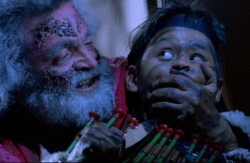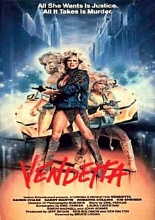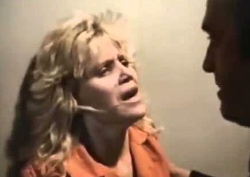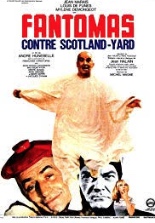
 Two years after his last caper, master criminal and master of disguise Fantomas (Jean Marais) returns with his biggest and bestest scheme to date: Tax the rich on their right to live, under penalty of execution! This he poses to the world’s third-wealthiest man, Lord MacRashley (Jean-Roger Caussimon, The Return of Dr. Mabuse), who’s not too keen on the idea.
Two years after his last caper, master criminal and master of disguise Fantomas (Jean Marais) returns with his biggest and bestest scheme to date: Tax the rich on their right to live, under penalty of execution! This he poses to the world’s third-wealthiest man, Lord MacRashley (Jean-Roger Caussimon, The Return of Dr. Mabuse), who’s not too keen on the idea.
Consulting with his sick-money buddies the world over, MacRashley decides to use his supposedly haunted castle as a trap to snare Fantomas, with Commissioner Juve (Louis de Funès), journalist Fandor (also Marais) and Fandor’s fiancée (Mylène Demongeot) as bait …
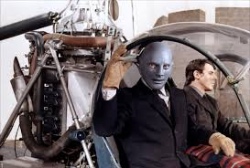 … which sounds all fine and dandy, except it soon becomes clear that perhaps this was done for budgetary reasons, to keep the story confined to one location, clearing the way for a series of sequences — a séance, a fox hunt and business about hunting bedsheet ghosts — for Juve to bumble his way through. This effectively shoves Fandor to the sidelines as the film basically bides its time until the last 20 minutes, when they return to the plot so things can take off — even literally, what with Fantomas’ escape rocket.
… which sounds all fine and dandy, except it soon becomes clear that perhaps this was done for budgetary reasons, to keep the story confined to one location, clearing the way for a series of sequences — a séance, a fox hunt and business about hunting bedsheet ghosts — for Juve to bumble his way through. This effectively shoves Fandor to the sidelines as the film basically bides its time until the last 20 minutes, when they return to the plot so things can take off — even literally, what with Fantomas’ escape rocket.
A limp “FIN” to an otherwise fine trilogy, Fantomas vs. Scotland Yard is a lot like having that third child: Yeah, you love it, but no way are you going to make a baby book this time around. After this one, returning director André Hunebelle and the gang called it quits, which is probably for the best, before a mere trifle became a pure trial. —Rod Lott

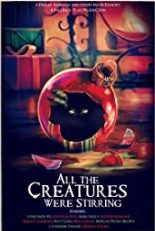
 Wanna see an oddball anthology of holiday horror filled with twists and bursting with creativity? Then you better watch out and queue up
Wanna see an oddball anthology of holiday horror filled with twists and bursting with creativity? Then you better watch out and queue up 



 From first frame, depicting a serene-scened snow globe shattering under the weight of a passing garbage truck, René Manzor’s
From first frame, depicting a serene-scened snow globe shattering under the weight of a passing garbage truck, René Manzor’s 